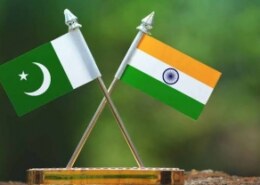How should India handle the situation where China is claiming Indian territories while also having significant business relations with India?
Major Wars Fought by India: 1. Indo-Pakistani War of 1947-1948 (First Kashmir War) When: October 1947 – December 1948 Summary: This was the first war between India and Pakistan over the region of Jammu and Kashmir. It ended with a ceasefire and the establishment of the Line of Control (LoC), dividinRead more
Major Wars Fought by India:
1. Indo-Pakistani War of 1947-1948 (First Kashmir War)
- When: October 1947 – December 1948
- Summary: This was the first war between India and Pakistan over the region of Jammu and Kashmir. It ended with a ceasefire and the establishment of the Line of Control (LoC), dividing the area between the two countries.
2. Indo-Pakistani War of 1965
- When: April – September 1965
- Summary: The second war between India and Pakistan, mainly fought in Kashmir. It ended with a UN-mandated ceasefire and the Tashkent Agreement, where both countries agreed to withdraw to pre-war positions.
3. Indo-Pakistani War of 1971
- When: December 3 – December 16, 1971
- Summary: This war resulted in the creation of Bangladesh from East Pakistan. India won the war decisively, leading to the surrender of Pakistani forces in East Pakistan.
4. Indo-Pakistani War of 1999 (Kargil War)
- When: May – July 1999
- Summary: A conflict in the Kargil district of Jammu and Kashmir, where Pakistani soldiers and militants occupied strategic heights. India successfully regained control of the territory.
5. Sino-Indian War of 1962
- When: October 20 – November 21, 1962
- Summary: A border war between India and China over disputed areas in Aksai Chin and Arunachal Pradesh. China declared a ceasefire and withdrew after achieving its military objectives.
6. Indian Peacekeeping in Sri Lanka (1987-1990)
- When: 1987 – 1990
- Summary: India sent the Indian Peace Keeping Force (IPKF) to Sri Lanka to help enforce peace between the Sri Lankan government and Tamil separatists. The mission faced resistance and ended with the withdrawal of Indian troops.


India faces a challenging scenario with China, marked by territorial disputes alongside significant economic ties. Handling this complex situation requires a multifaceted strategy that balances defence, diplomacy, and economic pragmatism. ### Strengthening Defense and Diplomatic Efforts 1. **EnhanceRead more
India faces a challenging scenario with China, marked by territorial disputes alongside significant economic ties. Handling this complex situation requires a multifaceted strategy that balances defence, diplomacy, and economic pragmatism.
### Strengthening Defense and Diplomatic Efforts
1. **Enhanced Border Security**: India must continue strengthening its defence capabilities along the disputed borders. This includes infrastructure development, better surveillance, and enhanced troop deployment to deter any aggressive moves by China. A strong defence posture will signal India’s preparedness to protect its territorial integrity.
2. **Diplomatic Engagement**: India should engage in continuous diplomatic dialogues with China to manage and resolve border disputes. Leveraging international forums and bilateral meetings can help de-escalate tensions and seek peaceful resolutions. Additionally, India can collaborate with other nations through multilateral platforms like the United Nations to highlight its stance and seek broader support.
3. **Strategic Alliances**: Building strategic alliances with other countries, particularly those in the Indo-Pacific region, can counterbalance China’s influence. Strengthening partnerships with countries like the United States, Japan, and Australia through initiatives such as the Quad can provide India with greater leverage in its negotiations with China.
### Economic Pragmatism
1. **Diversification of Trade**: While maintaining economic relations with China, India should work towards diversifying its trade partners to reduce dependency. Encouraging domestic manufacturing through initiatives like “Make in India” can boost self-reliance and reduce reliance on Chinese imports. This also includes exploring new markets and strengthening trade ties with other countries.
2. **Bilateral Trade Relations**: India must continue to engage in pragmatic economic relations with China, given the significant trade volume between the two nations. Negotiating fair trade practices and addressing trade imbalances can benefit both economies. However, India should remain cautious and ensure that economic dependencies do not compromise its national security interests.
### Technological and Economic Measures
1. **Investing in Technology**: Boosting technological innovation and investing in critical sectors like telecommunications, electronics, and pharmaceuticals can help India reduce its reliance on Chinese products. Promoting research and development, along with supporting startups and tech companies, can drive economic growth and resilience.
2. **Economic Leverage**: Utilizing economic leverage wisely is crucial. India can impose selective economic measures, such as tariffs or restrictions on certain Chinese goods, to protect its domestic industries while avoiding a full-scale economic confrontation. This approach allows India to assert its position without severely disrupting bilateral trade relations.
See less